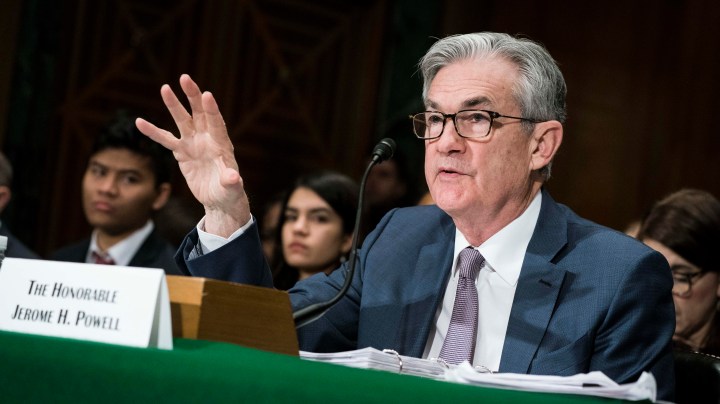
In emergency move, Fed cuts interest rates by 0.5%
In emergency move, Fed cuts interest rates by 0.5%

The Federal Reserve this morning cut interest rates by half a percentage point. For this to happen between formal policy meetings is highly unusual and an indication of the emergency driving the decision.
What’s called the “federal funds rate,” the main way central bankers add or remove liquidity into the financial system, was already low, and now it will be managed to stay between just 1% and 1.25%.
The Fed’s policymaking committee was unanimous in its decision. The Fed says it will continue to closely monitor the COVID-19 outbreak and use appropriate tools to support the economy.
To make sense of the cut, we spoke with Karen Petrou, managing partner of the Washington-based economic consulting firm Federal Financial Analytics.
David Brancaccio: OK, surprise. Not even after a scheduled meeting of Fed policymakers. Are you reassured they’re taking action, or maybe scared they even had to do this?
Karen Petrou: I’m troubled that they did, because I really think that the Fed is responding not to the economy, let alone to any kind of liquidity concerns or structural stress, but to the market. And I really hate to see the central bank continue to exercise what used to be called the “Greenspan put,” now it’s become the “Powell put” — that when markets are shaky, the Fed steps in and rescues the traders. That’s not what a central bank is for.
Brancaccio: Yeah, because now the traders are going to know the Fed is watching their back very closely.
Petrou: And a market that runs on moral hazard runs on fumes. I would like to see some market recognition of — we’re supposed to have efficient markets with traders recognizing forward-looking values. That’s not what we’re doing. Everybody’s trading on the Fed. And that is, ultimately, a dangerous game.
Brancaccio: And you’ve had some questions about whether or not cutting interest rates actually helps the problem at hand, which is trying to help the world economy through concerns about the coronavirus.
Petrou: I think it has virtually nothing to do with it. Unless the Fed figures out how to get in the face mask manufacturing business, or figures out a way to buy tons of copper to support the supply chain. What the Fed is supposed to do is supply liquidity to the financial market and ensure a stable economy, by way of maximum employment and price stability. At this point, there’s no reason to intervene. Now I know people will argue, “Well, you need to intervene early because it takes a while for monetary policy to transit through the economy.” But the problem is the economy’s problems have nothing to do with the cost of money, which is already at extra record lows. It has to do with real world contagion and a virus. A half a point is not going to cure anybody.
Clarification (March 3, 2020): This story has been updated to more clearly describe the nature of the rate cut.
There’s a lot happening in the world. Through it all, Marketplace is here for you.
You rely on Marketplace to break down the world’s events and tell you how it affects you in a fact-based, approachable way. We rely on your financial support to keep making that possible.
Your donation today powers the independent journalism that you rely on. For just $5/month, you can help sustain Marketplace so we can keep reporting on the things that matter to you.


















